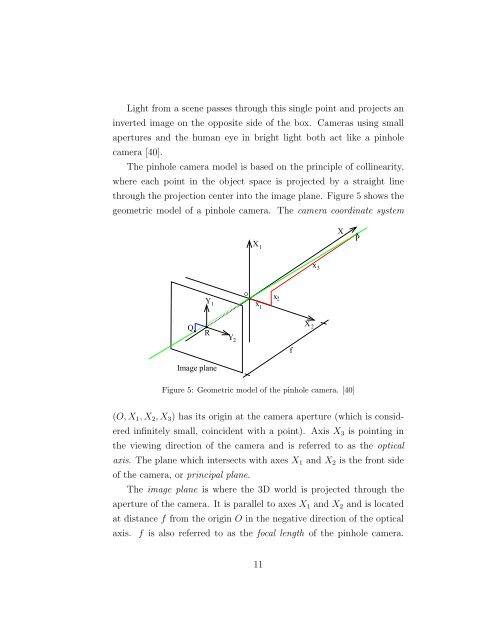Scarica (PDF – 6.19 MB)
Scarica (PDF – 6.19 MB)
Scarica (PDF – 6.19 MB)
You also want an ePaper? Increase the reach of your titles
YUMPU automatically turns print PDFs into web optimized ePapers that Google loves.
Light from a scene passes through this single point and projects an<br />
inverted image on the opposite side of the box. Cameras using small<br />
apertures and the human eye in bright light both act like a pinhole<br />
camera [40].<br />
The pinhole camera model is based on the principle of collinearity,<br />
where each point in the object space is projected by a straight line<br />
through the projection center into the image plane. Figure 5 shows the<br />
geometric model of a pinhole camera. The camera coordinate system<br />
Q<br />
Y<br />
R<br />
1<br />
Image plane<br />
Y<br />
2<br />
O<br />
X<br />
x 1<br />
Figure 5: Geometric model of the pinhole camera. [40]<br />
(O, X1, X2, X3) has its origin at the camera aperture (which is consid-<br />
ered infinitely small, coincident with a point). Axis X3 is pointing in<br />
the viewing direction of the camera and is referred to as the optical<br />
axis. The plane which intersects with axes X1 and X2 is the front side<br />
of the camera, or principal plane.<br />
1<br />
The image plane is where the 3D world is projected through the<br />
aperture of the camera. It is parallel to axes X1 and X2 and is located<br />
at distance f from the origin O in the negative direction of the optical<br />
axis. f is also referred to as the focal length of the pinhole camera.<br />
11<br />
x 2<br />
f<br />
X<br />
2<br />
x 3<br />
X<br />
P




